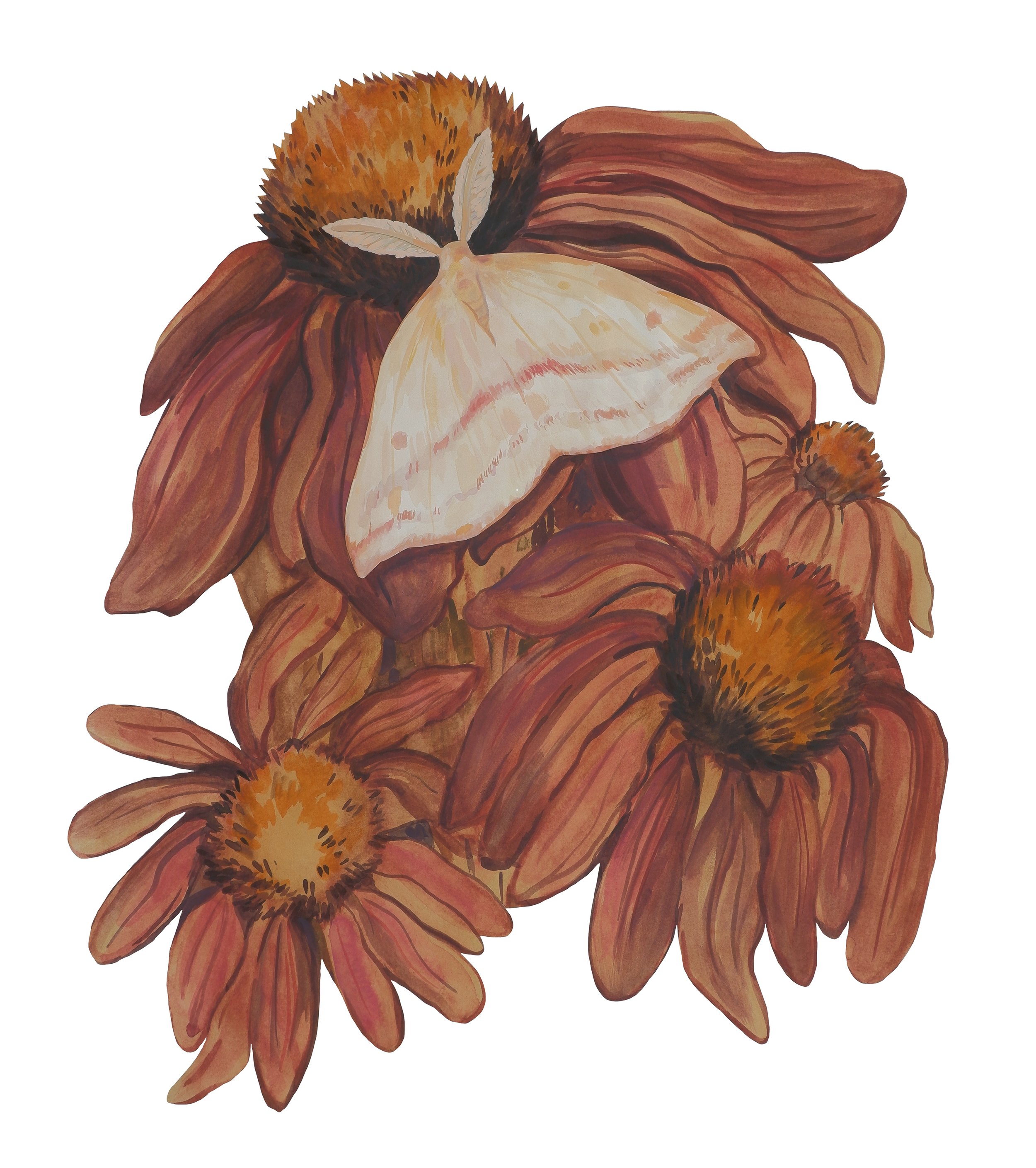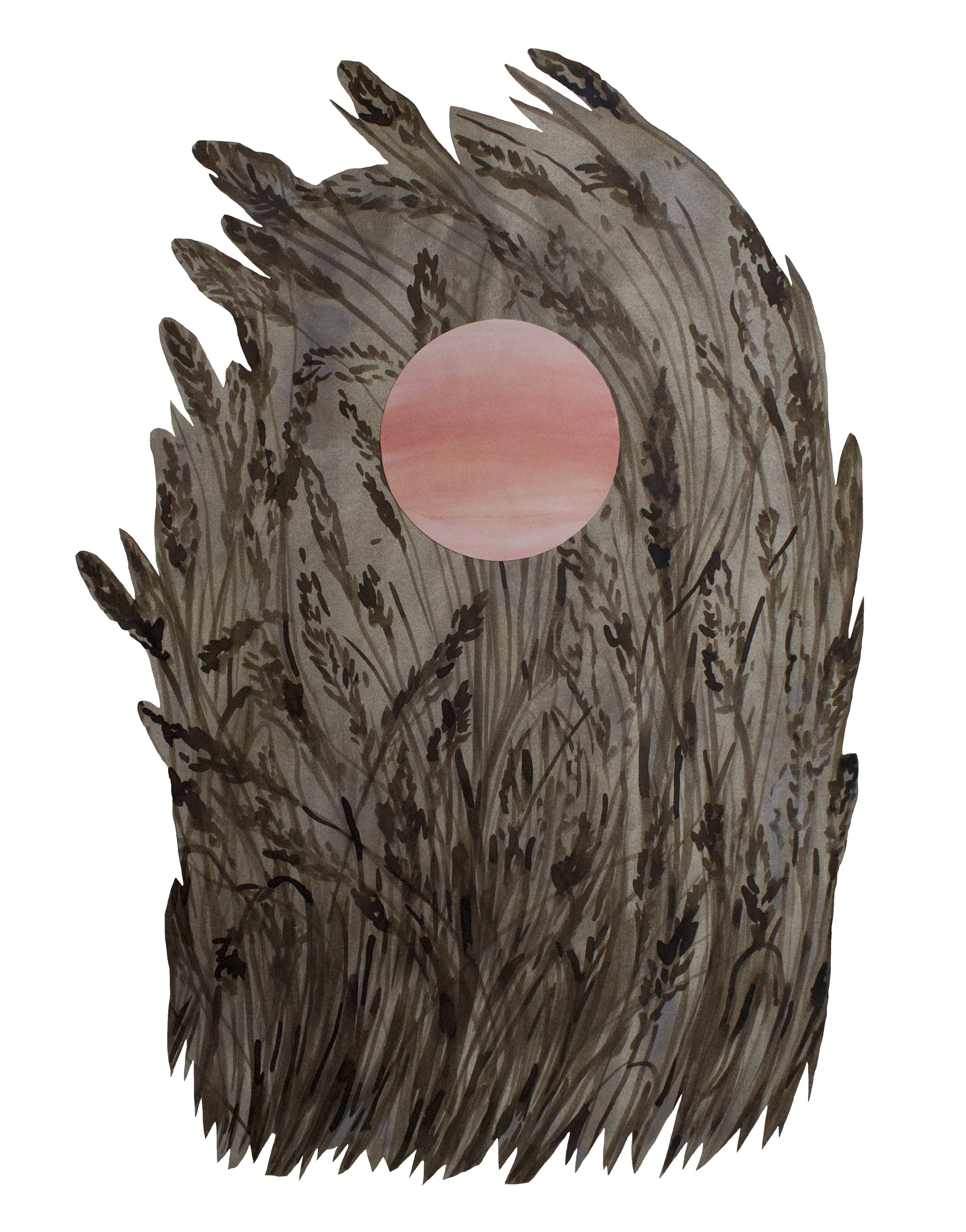I feel very fortunate to say that I’ve been an artist in residence at Oak Spring Garden Foundation (OSGF), not once, not twice, but three times now! Oak Spring Garden Foundation is a very special place for me and for so many other people. This residency program has been apart of my life for nearly five years. It saw me through so many transitions in my creative and personal life, and I’m so happy to share about how it’s informed my art making practice!
The first time I was an artist in residence at OSGF, was for six-weeks in April through May, 2019. I had the pleasure of watching 750 acres of relatively untouched rural Virginia landscape transition from winter into spring. At that moment in my life, everything was new. My studio apartment, my two hourly part-time jobs, and my relationship with my current boyfriend. During my first residency, I made dozens of small oil paintings (I no longer oil paint now - ha!), and I spent hours upon hours each day walking, biking, and immersing myself in grasslands, woodlands and the formal gardens of OSGF. The Foundation was just getting up and running and in many ways, so was I, as a post-college artist. I had no idea where my studio practice was going and it stressed me out beyond belief. Reflecting back on it, I’m glad I didn’t have it all figured out then, at the naive age of 25. Through the struggle and discomfort I found my way forward.
My first studio space at Oak Spring. This is six weeks worth of oil paintings and a few works on paper.
A series of 12” x 9” paintings that were inspired by watching spring unfold across Oak Spring.
I returned to OSGF for a one week alumni artist residency in late October 2020. It was a COVID-19 impacted residency. I lived alone and worked alone 24/7, for seven days. I welcomed the solitude and space to create. I was also thrilled to see how much OSGF had changed in 1 1/2 years since my last residency. They had a paper making and dye garden, a working farm with a CSA program, and the horse pastures were now very young biodiverse grasslands and meadows. During my days, I collected withering dye garden plants, black walnuts and other materials on the property to make into ink for when I returned home. Even though this residency was short, it was incredibly productive. I made drawings using black walnut ink that I had recently taught myself how to forage for and make. I used my time to observe fall transitioning into winter and embraced the quiet time to reflect on what I really wanted to make. I developed works over the course of that week that became the foundation for what my current art practice is now - both conceptually and physically. I left on day seven feeling like a new person.
A series of mixed media works on paper that all include black walnut ink and other handmade inks.
My main focus was drawing with handmade ink and slowly introducing color. I wanted to capture the essence of fall with each piece.
Which brings me to the present day. I returned to OSGF for a third time for a two-week alumni artist residency in July 2023. Nearly three years since my second residency and over 4 1/2 since my first residency, I was back again to make a new body of work.
My focus for the two weeks was to make art that explored native Northeastern pollinators and their host plants. Similar to my previous residencies, I spent most of the days outside, wandering through grasslands, meadows and gardens watching pollinators (bees, butterflies, beetles, moths etc.) engage with flowers and plants. I found the best place to observe pollinators, in the new Rokeby Habitat Garden. I would visit it in the mornings and in the early evenings each day. I was eye-level with wild bergamot and purple coneflowers. The flowers shimmered at sunset and hummed with hundreds if not thousands of busy bees. I studied the plants, curious to see what insects relied on them as a nectar source. I felt very much at peace here, seeing pollination in its greatest form.
I loved the purple coneflowers so much that I made a painting about them, Pollinators Delight (pictured below). The moth collaged on top of the coneflowers is a chickweed geometer moth. I spotted it resting on a blade of dewy grass beside my studio one morning. It’s about the size of a nickel in real life (pictured below). The yellows in the piece are the last of the goldenrod flower ink that I made back in August 2022. I love that the foundation of my painting about flowers is made from actual flowers. I really enjoyed focusing on making large cut-out pieces. I’m no stranger to breaking the rectangle and I pushed that style further.
Purple coneflowers in all their glory!
Purple coneflowers with a skipper butterfly stopping by for some sweet, sweet nectar.
Chickweed geometer moth on a blade of grass.
Pollinators Delight, 2023, goldenrod flower ink, all-natural gouache and collage on paper, 27” x 22 1/2.”
I walked miles and miles of cut paths through grasslands daily, filled with gold finches, red-winged black birds, crows, white tailed deer; red foxes, swallowtail and monarch butterflies (many were spotted mating!) and so many other species of insects and animals. It was just me and them for the most part, in a sea of grass as tall as myself. At every turn I was presented with a new animal or plant to surprise and delight me.
I would occasionally hear a plane overhead or a car on the road, otherwise, the world sounded wild and went unbothered by people (besides me and a few others scurrying about). I found the grassland spaces to be incredibly inspiring. It’s very rare to find natural spaces that aren’t mowed lawns, farm fields or woodlands back home in Pennsylvania. It’s no surprise that grassland species are the fastest declining species in North America, due to mankind’s desire for empty green lawns, monoculture farmlands, urban sprawl and so on. Untouched nature is hard to find these days.
Grasslands are as alive and biodiverse as forests or oceans if they’re allowed to be. My hours spent in the tall grass inspired the piece below, Being Present in the Grasslands. Made with mostly black walnut ink (grass) and all-natural gouache (purples washes and the collaged on red sun), it reflects the lushness of the tall grass I experienced. I originally wanted to cover it in collaged bugs that I saw during my days, but I found the simplicity of the grass to be more profound on its own. After all, when you approach tall grass, it just looks like grass - unless you pause and look closer. There were a few nights with unbelievably deep red-orange, fiery-like sunsets. Those sunsets live on as the centerpiece in Being Present in the Grasslands and in two other smaller pieces that I’m currently working on.
Walking through the grasslands.
Another glorious sunset!
One of the deep, red-orange sunsets that I was very lucky to witness during an evening bike ride.
A work in progress image of Being Present in the Grasslands. I originally wanted to collage on bugs, like the dogbane leaf beetles that you can see taped onto the paper in the image.
Being Present in the Grasslands, 2023, black walnut ink, all-natural gouache and collage on paper, 29” x 19.”
As I wrap things up, I want to take a moment to appreciate the best part of my residency: the time spent with other artists, chefs, scientists, gardeners, farmers, scholars, writers, biologists etc. I met SO MANY wonderful people this past July. Being able to spend time amongst others who love the land as deeply as I do, and seeing them reflect that back into their work is an immense privilege and honor.
A dogbane leaf beetle on a dogbane plant. This rainbow jewel of a bug was one of best surprises of my residency.
A big, beautiful monarch butterfly caterpillar! I spent hours everyday observing insects. Someone even asked me if I was an entomologist (a bug scientist)!
I took this photo of sunflowers in the dye garden on the last night of my residency. It was a very bittersweet night.
Me working in the studio. Housemate and fellow artist Maddison Colvin took this photo.
















